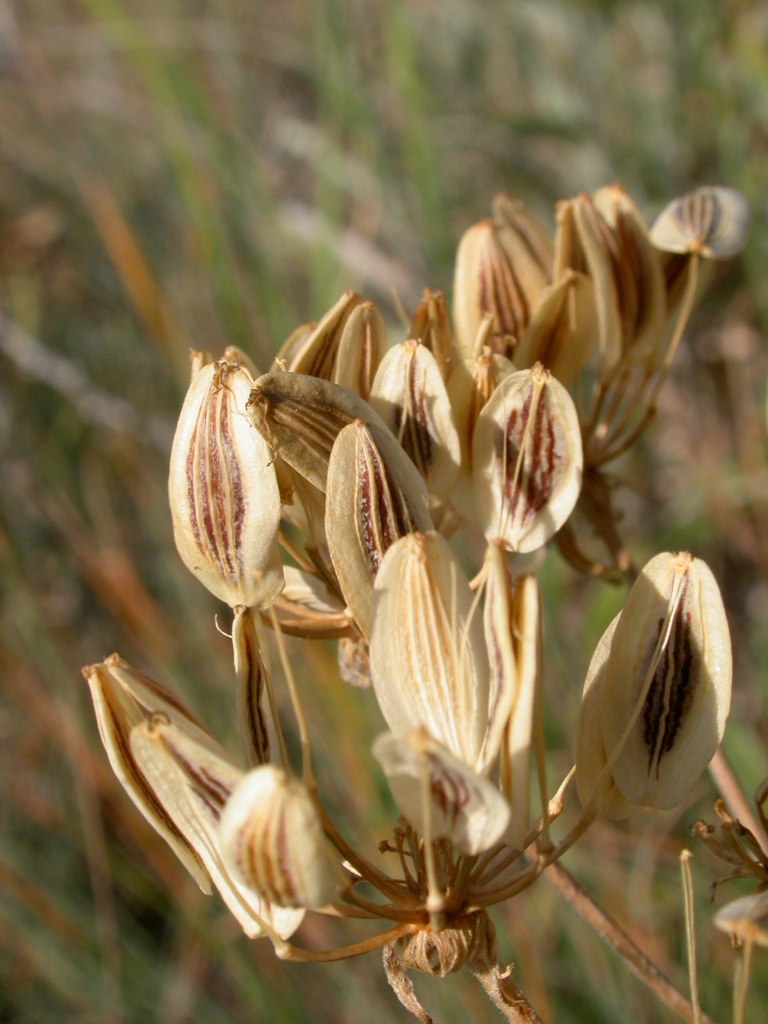Nine-leaved Desert Parsley

Tidbits: All species of Lomatium are edible, but not to be confused with their extremely poisonous cousins, the Hemlocks (Cicuta and Conium species). The tuber-like root tastes a bit like sweet parsnips, and can be dried and ground into a flour for biscuits and bread. It was a staple food for Lewis and Clark, who knew it as chappalell according to their May 1806 journal entries:
Wild gardening: An early spring wildflower with high drought tolerance and low fertility needs. Members of the Apiaceae family are great companion plants, attracting ladybugs, parasitic wasps and predatory flies that prey on insect pests.
Lomatium triternatum
Apiaceae (Parsley Family)
Quick ID:
Look for Nine-leaved Desert parsley blooming now in dry, open sites around Missoula (check out the face of Mt. Sentinel, or low on Waterworks). It's a small herbaceous perennial with yellow clumps of flowers, growing low to the ground. The leaves, which smell like parsley, are delicate wisps, deeply divided into long strings that always remind me of veins.
 |
| Cous (pronounced "cowse") Biscuitroot |
Lomatium is highly typical of the charismatic Apiaceae family: deeply dissected, aromatic leaves and big chunky taproots. Remind you of a carrot? Our other native Lomatiums -Fern-leaved Desert Parsley (L. dissectum) and Cous Biscuitroot (L. cous) - show the same basic characteristics.
+fruit.JPG) |
| Fern-leaved Desert Parsley in fruit |
The clumps of flowers (aka inflorescences) of Apiaceae are known as "umbels" and resemble an upside-down umbrella, with many short flower stalks (called pedicels) arising from a common point. Think of the familiar umbels of flowering dill in your herb garden.
Common throughout the northwest, east to the Dakotas. Click here for MT range map
Lomatium is the diminutive of the Greek root Loma, "border, fringe" in reference to its winged fruits (similar to those of Lomatium macrocarpum, pictured here. Ternatum is a Latin term meaning "in clusters of three", thus, triternatum gives us the three threes of nine-leaved desert parsley. Also frequently called "Biscuitroot."

"This plain as usual is covered with arromatic shrubs, hurbatious plants and a short grass...there is one which produces a root somewhat like the sweet pittaitoe."
"This root they collect as early as the snows disappear in the spring and continue to collect it untill the quawmash supplys it's place which happens about the latter end of June"...
Wild gardening: An early spring wildflower with high drought tolerance and low fertility needs. Members of the Apiaceae family are great companion plants, attracting ladybugs, parasitic wasps and predatory flies that prey on insect pests.


.jpg)
















